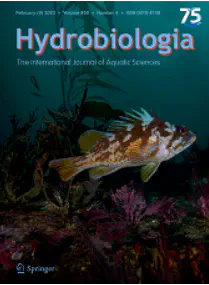Spatio-temporal and intra-specific variations in the physiological and biochemical condition of the invasive bivalve Corbicula fluminea

Abstract
Corbicula fluminea is a known aquatic invasive species responsible for several ecological and economic impacts. In Portugal, it is found in all major watersheds, although to varying degrees of invasion (regarding density, biomass and spatial distribution). The aim of this study was to evaluate the spatio-temporal differences in condition indices (CIs) and biochemical composition (proteins, lipids and energy) of individuals collected in Lima (low invasion) and Minho (high invasion) Rivers, as well as the effects of intra-specific competition (densities: 150, 500, 1000 individuals/m2) on the CIs of C. fluminea. CIs and biochemical composition varied between rivers and over time, with populations in Lima and Minho showing different patterns. Corbicula fluminea in Lima River had higher CIs and lower densities with more individuals of larger size, while individuals in Minho River had lower CIs and high densities with a more uniform size distribution. The intra-specific competition experiment showed that the optimum of C. fluminea was reached at 500 individuals/m2 density, possibly related to the species ability of enrich sediments with organic matter, leading to a positive feedback on phytoplankton and/or microbial communities. This study improves the understanding of the ecophysiological conditions of C. fluminea populations, a topic neglected in previous studies.